#Carlo Tresca
Text

[Photo:
1913 photo of Paterson Silk Strike leaders l to r:
Patrick Quinlan, Carlo Tresca, Elizabeth Gurley Flynn, Adolf Lessig, and Bill Haywood] -by unknown author-
Today in Labor History August 10, 1923: Italian-American anarchist and IWW organizer Carlo Tresca was arrested in the United States on the charge of publishing anti-fascist literature.
Tresca opposed fascism, Stalinism and mafia-infiltration of unions. He was assassinated in 1943. Some believe the Soviets killed him in retaliation for his criticism of Stalin. The most recent research suggests it was the Bonanno crime family, in response to his criticism of the mafia and Mussolini. Tresca wrote two books. His autobiography was published posthumously in 2003. He also wrote a book in Italian, “L'attentato a Mussolini ovvero il segreto di Pulcinella.”
~My comment:
Who knew that anti-fascist literature was ILLEGAL to publish and distribute in the USA of 1923?? Not me. 😲 😯 😒~
#Working Class#Labor History#IWW#Carlo Tresca#Mesabi#mining#books#writer#author#Stalin#anarchism#soviet#mafia#fascism#anti-fascism#Mussolini#union
7 notes
·
View notes
Text
Juliet-Stuart Poyntz. Free will? Abduction? Or murder?
When a private citizen suddenly disappears it could be for a number of reasons. Debts, trauma, fear or perhaps a simple desire to start over. If they can’t become somebody else, they can at least be somewhere else. Of course, there could be other reason. Perhaps they didn’t vanish by their own choosing, but somebody else’s. The still-unsolved vanishing of American Juliet-Stuart Poyntz is a…
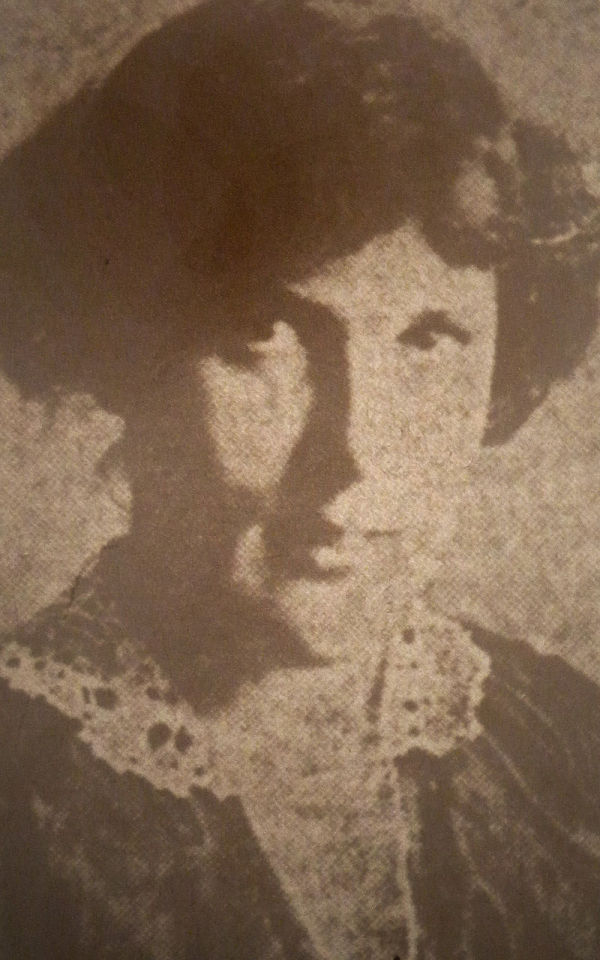
View On WordPress
#Anarchist#assassin#assassinated#assassination#Benjamin Gitlow#Carlo Tresca#Central Park#crime and punishment#Espionage#George Mink#History#Il Martello#Juliet Stuart Poyntz#murder#New York#NKVD#Soviet Union#Spanish Civil War#Stalin#treason#true crime#Westchester
0 notes
Text
The Wonderful Saloon
McSorley’s Old Ale House is probably best known to New Yorker readers through the work of Joseph Mitchell, who was noted for his distinctive character studies in The New Yorker and who in 1943 published McSorley’s Wonderful Saloon, which was later included in a 1992 collection of Mitchell’s works, Up In the Old Hotel.
Sept. 15, 1934 cover by Rea Irvin.
Among New York’s oldest saloons, McSorley’s…
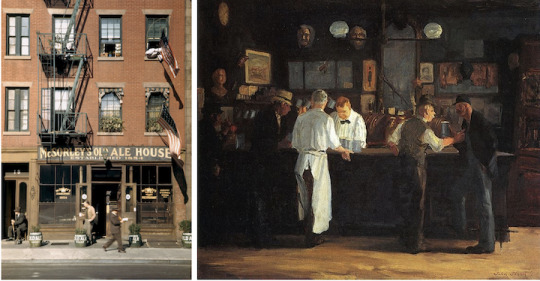
View On WordPress
#Bing Crosby#Carlo Tresca#Gardner Rea#Garrett Price#Gilbert Bundy#Lescaze House#Lewis Mumford#Max Eastman#McSorley&039;s Old Ale House#Perry Barlow#Peter Arno#Raymond Holden#William Lescaze#William Steig
0 notes
Text
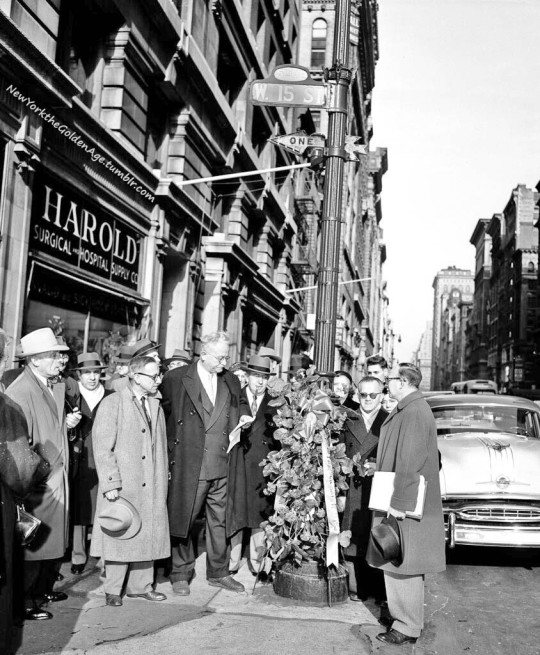
A wreath of red carnations is placed against a lampost on the northwest corner of Fifth Avenue and 15th Street by "Friends of Carlos Tresca," January 8, 1955. Tresca, the outspoken anti-fascist editor of "Il Martello," was shot down at the spot during a dim-out on Jan. 11, 1943. Many theories exist as to the identity of the killer(s), but none has been proved. Samuel H. Friedman, second from left, a member of the Socialist Party's nation executive board, and Phillip Heller, right, former labor information officer for the Mutual Security Agency in Germany and Austria, eulogized the late editor.
Photo: Harry Harris for the AP
#vintage New York#1950s#Harry Harris#Carlos Tresca#assassination#anti-fascist#Jan. 8#8 Jan.#memorial#vintage NYC
40 notes
·
View notes
Photo

On this day, 11 January 1943, Italian-American anarchist union organiser and newspaper editor Carlo Tresca was assassinated in New York City. Tresca had been a railway union activist and editor back in Italy, and migrated to the US to avoid a prison term. In his new home, Tresca travelled around the country, helping organise workers with the Industrial Workers of the World union. He was active in organising and supporting strikes of miners in Pennsylvania, textile and hotel workers in New York, silk workers in New Jersey and miners in Minnesota. Tresca also dodged assassination, bombing and lynching attempts, arrests, deportation and bogus criminal charges of offences including murder. With the rise of fascism in Italy, Tresca agitated strongly amongst Italian workers in the US to oppose fascists' attempts to gain a foothold in the migrant community as well. Tresca was surveilled by the Department of Justice, and his anti-fascist newspaper Il Martello was held up in the post. Eventually when the Italian fascist government asked the US to suppress Il Martello, the government happily complied. They prosecuted Tresca for sending "obscene matter" through the post, and sentenced him to a year and a day's imprisonment, until mass outrage forced the president to commute his sentence. The most recent research suggests that Tresca was murdered by contract killer Carmine Galante, on the orders of fascist-sympathising mobsters. After his death, Tresca's friend Max Eastman wrote: "For Poetry’s sake, for the sake of his name and memory, Carlo had to die a violent death. He had to die at the hand of a tyrant’s assassin. He had lived a violent life. He had loved danger. He had loved the fight. His last motion was to swing and confront the long-expected enemy. So let us say farewell to Carlo as we hear him say—as he surely would if the breath came back—‘Well, they got me at last!’" https://www.facebook.com/workingclasshistory/photos/a.296224173896073/2184240811761057/?type=3
131 notes
·
View notes
Text
Cannibali e re
In questi giorni è in corso una criminalizzazione del movimento anarchico che ricorda alcuni dei periodi peggiori della storia di questo paese. Nella continua e spasmodica ricerca di un “nemico oggettivo” da dare in pasto all’opinione pubblica per distogliere l’attenzione dal peggioramento costante delle nostre condizioni di vita in termini materiali, di diritti e di servizi, è tornato il turno degli anarchici.
Chiaramente vengono descritti come criminali pericolosi e potenziali assassini, addirittura si ventilano rapporti con le organizzazioni mafiose partendo da una presunta solidarietà che alcuni boss avrebbero espresso ad Alfredo Cospito per il suo sciopero della fame. Giova ricordare che specie in un regime come quello del 41bis sono le autorità giudiziarie a decidere dove i detenuti devono stare, quali sono i detenuti nelle celle accanto alle loro, come, quando e con chi si è legittimati a passare l’unico breve momento della giornata fuori dalla cella.
Queste infamanti accuse, questi titoli di giornale che parlano di “patti tra gli anarchici e i mafiosi”, sono aberranti e offendono la memoria di tantissimi militanti anarchici che hanno lottato, come tanti comunisti e socialisti, contro le organizzazioni mafiose.
Ci vengono in mente subito i cinque anarchici della Baracca, morti mentre si recavano a Roma con prove del rapporto tra stato, estrema destra e ‘ndrangheta durante i moti di Reggio e la strage di Gioia Tauro, oppure Carlo Tresca, sindacalista anarchico ucciso negli Stati Uniti da Cosa Nostra americana.
Queste squallide campagne di stampa vanno di pari passo a tutta una serie di misure repressive che vanno a colpire militanti e realtà in tutto il territorio nazionale di diversa sensibilità politica e anche estranee alle vicende degli ultimi giorni.
Vogliamo esprimere solidarietà a tutte e tutti e in particolare a Gigi del Campetto di Giulianova, che stimiamo e a cui vogliamo bene e col quale abbiamo condiviso presentazioni e confronti.
Al tempo stesso vogliamo ricordare a tutti che se le organizzazioni criminali esistono e proliferano è perché da sempre hanno un rapporto dialettico, di scambio e d’interesse reciproco con le istituzioni di questo paese.
Le stesse che hanno lasciato uccidere i propri uomini e le proprie donne col duplice obiettivo di bloccare tutti coloro che si avvicinavano a dipanare la matassa dei rapporti tra vertici dello Stato e delle realtà criminali, e al tempo stesso creare dei martiri da usare come strumenti di propaganda.
46 notes
·
View notes
Text
April Fool Birthday Poem for Grandpa // Diane di Prima
Today is your
birthday and I have tried
writing these things before,
but now
in the gathering madness, I want to
thank you
for telling me what to expect
for pulling
no punches, back there in that scrubbed Bronx parlor
thank you
for honestly weeping in time to
innumerable heartbreaking
italian operas for
pulling my hair when I
pulled the leaves off the trees so I'd
know how it feels, we are
involved in it now, revolution, up to our
knees and the tide is rising, I embrace
strangers on the street, filled with their love and
mine, the love you told us had to come or we
die, told them all in that Bronx park, me listening in
spring Bronx dusk, breathing stars, so glorious
to me your white hair, your height your fierce
blue eyes, rare among italians, I stood
a ways off, looking up at you, my grandpa
people listened to, I stand
a ways off listening as I pour out soup
young men with light in their faces
at my table, talking love, talking revolution
which is love, spelled backwards, how
you would love us all, would thunder your anarchist wisdom
at us, would thunder Dante, and Giordano Bruno, orderly men
bent to your ends, well I want you to know
we do it for you, and your ilk, for Carlo Tresca,
for Sacco and Vanzetti, without knowing
it, or thinking about it, as we do it for Aubrey Beardsley
Oscar Wilde (all street lights shall be purple), do it
for Trotsky and Shelley and big/dumb
Kropotkin
Eisenstein's Strike people, Jean Cocteau's ennui, we do it for
the stars over the Bronx
that they may look on earth
and not be ashamed.
#poetry#Diane di Prima#American poetry#poems of praise#City Lights#socialism#Jean Cocteau#Oscar Wilde#April Fools#April#spring#birthday poems
5 notes
·
View notes
Photo
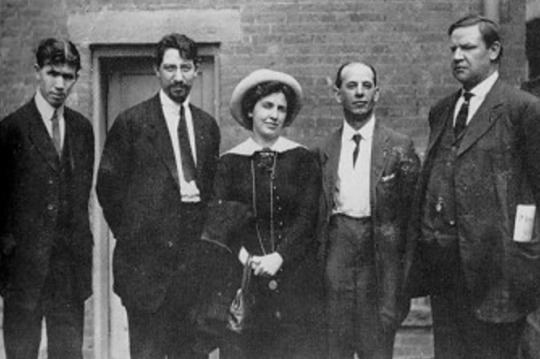
Uncredited Photographer IWW Organizers Patrick Quinlan, Carlo Tresca, Elizabeth Gurley Flynn, Adolph Lessig, and Big Bill Haywood During the Patterson Textile Strike, Patterson, New Jersey 1913
“History has a long-range perspective. It ultimately passes stern judgment on tyrants and vindicates those who fought, suffered, were imprisoned, and died for human freedom, against political oppression and economic slavery.” Elizabeth Gurley Flynn
“I've never read Marx's “Capital,” but I've got the marks of capital all over my body.“ — Big Bill Haywood
41 notes
·
View notes
Text
Events 1.11 (after 1940)
1942 – World War II: Japanese forces capture Kuala Lumpur, the capital of the Federated Malay States.
1942 – World War II: Japanese forces attack Tarakan in Borneo, Netherlands Indies (Battle of Tarakan)
1943 – The Republic of China agrees to the Sino-British New Equal Treaty and the Sino-American New Equal Treaty.
1943 – Italian-American anarchist Carlo Tresca is assassinated in New York City.
1946 – Enver Hoxha, Secretary General of the Communist Party of Albania, declares the People's Republic of Albania with himself as head of state.
1949 – The first "networked" television broadcasts took place as KDKA-TV in Pittsburgh, Pennsylvania goes on the air connecting the east coast and mid-west programming.
1957 – The African Convention is founded in Dakar, Senegal.
1959 – 36 people are killed when Lufthansa Flight 502 crashes on approach to Rio de Janeiro/Galeão International Airport in Brazil.
1961 – Throgs Neck Bridge over the East River, linking New York City's boroughs of The Bronx and Queens, opens to road traffic.
1962 – Cold War: While tied to its pier in Polyarny, the Soviet submarine B-37 is destroyed when fire breaks out in its torpedo compartment.
1962 – An avalanche on Huascarán in Peru causes around 4,000 deaths.
1964 – Surgeon General of the United States Dr. Luther Terry, M.D., publishes the landmark report Smoking and Health: Report of the Advisory Committee to the Surgeon General of the United States saying that smoking may be hazardous to health, sparking national and worldwide anti-smoking efforts.
1966 – The Tbilisi Metro is opened.
1972 – East Pakistan renames itself Bangladesh.
1973 – Major League Baseball owners vote in approval of the American League adopting the designated hitter position.
1983 – United Airlines Flight 2885 crashes after takeoff from Detroit Metropolitan Airport, killing three.
1986 – The Gateway Bridge, Brisbane, Queensland, Australia is officially opened.
1994 – The Irish Government announces the end of a 15-year broadcasting ban on the IRA and its political arm Sinn Féin.
1995 – 51 people are killed in a plane crash in María La Baja, Colombia.
1996 – The Space Shuttle Endeavour is launched on mission STS-72 to retrieve the Japanese Space Flyer Unit.
1998 – Over 100 people are killed in the Sidi-Hamed massacre in Algeria.
2003 – Illinois Governor George Ryan commutes the death sentences of 167 prisoners on Illinois's death row based on the Jon Burge scandal.
2013 – One French soldier and 17 militants are killed in a failed attempt to free a French hostage in Bulo Marer, Somalia.
2020 – COVID-19 pandemic in Hubei: Municipal health officials in Wuhan announce the first recorded death from COVID-19.
1 note
·
View note
Photo

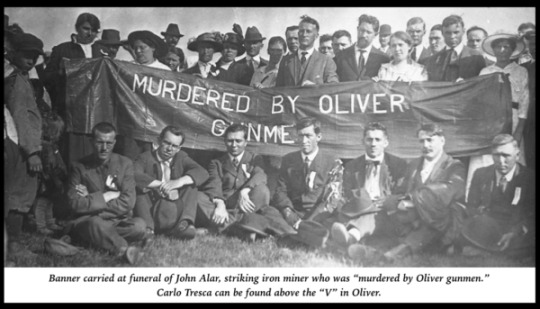
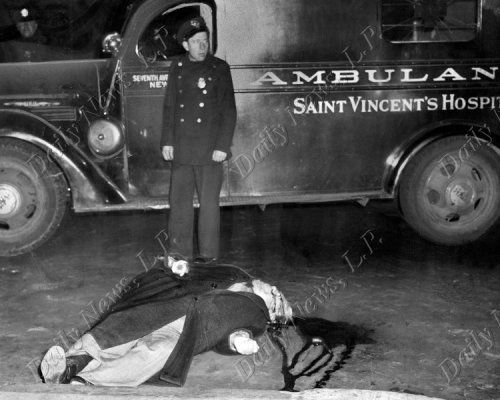
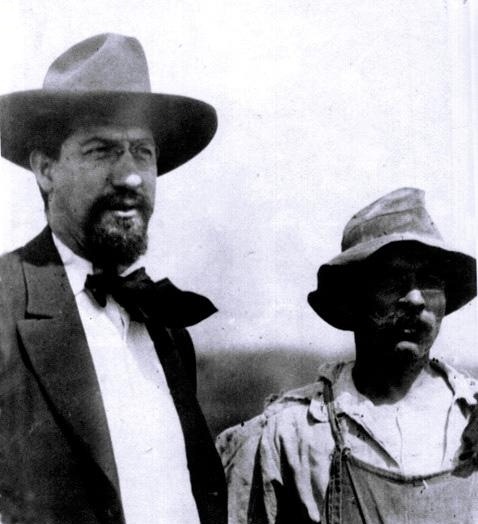

Carlo Tresca (Vida y obra)
Tal día como el 9 de marzo de hace 144 años nació Carlo Tresca. Nació el 9 de marzo de 1879 en Sulmona, L’Aquila, Abruzzo, (Italia) y murió asesinado el 11 de enero de 1943 en una calle de Nueva York, (Estados Unidos) por un desconocido. En 1904 partió hacia los Estados Unidos para escapar de una pena de cárcel. Comenzó su andadura como socialista hasta que conoció las ideas anarquistas.
0 notes
Text
The Unquiet Dead .5 introduction - AudioZine
This is the first of a book length piece the full text is available unquietdead.tumblr.com

The Unquiet Dead: Anarchism, Fascism and Mythology .5 Introduction – by Sasha de Cleyre – MP3 – Read – Print – Torrent – Archive – YouTube This is the first installment of a book length piece The Unquiet Dead the full text is available unquietdead.tumblr.com and we will be posting recordings of the other chapters as we finish them. The introduction includes an explanation of the project;…
View On WordPress
#ACAB#Anarchism#Anarchist#Anarchy#Anti-Fascism#Antifa#biopower#Carlo Tresca#essentialism#Fascism#Feminism#hauntological#History#ISIS#IWW#Mythology#Spanish Civil War#speculative fiction#the beutiful idea#Walter Benjamin#White Supremacy
49 notes
·
View notes
Text
January 11, 1943
TRESCA
Carlo Tresca was an Italian-American newspaper editor, orator and labor organizer who was a leader of Industrial Workers of the World during the decade of the 1910s. He is remembered as a leading public opponent of fascism, stalinism and mafia infiltration of the trade union movement. By 1943 he was under police surveillance and on January 9, 1943 his surveillance team witnessed an incident in which a speeding car attempted to run him over. On January 11, 1943 in New York Tresca was leaving his parole officer's offices when he dodged surveilling officers by jumping into a car that was waiting for him. 2 hours later Tresca was crossing Fifth Avenue at 13th Street on foot when a black Ford pulled up beside him. A short squat gunman in a brown coat jumped out and shot Tresca in the back of the head with a handgun killing him instantly. The black Ford was later found abandoned nearby. One theory at the time was that mafia was the suspected assassin acting on orders from Sicily. Others have theorized that Tresca was eliminated by NKWD as retribution for criticism of the Stalin regime of Soviet Union. More recent research is stated that Tresca was killed by Carmine Galante on the order of Frank Garofalo – underboss to Joseph Bonanno, fascist sympathizer and close friend to Generoso Pope. Tresca hadn't only been critical of Pope but recently berated Garofalo and threatened to expose him in Il Martello. Galante only recently released from prison was seen by his parole officer fleeing the scene. Unfortunately due to the wartime ration of gasoline the parole officer was unable to give chase.
3 notes
·
View notes
Text
5 Questions with Robert Glück, Author of Margery Kempe
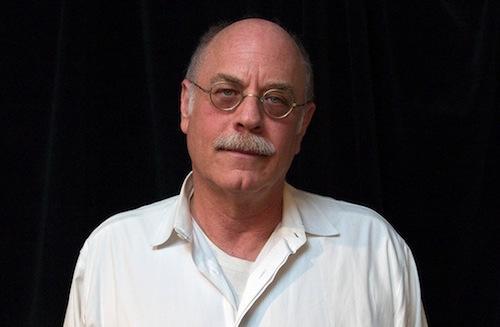
Robert Glück is a poet, fiction writer, critic, and editor. With Bruce Boone, he founded the New Narrative movement in San Francisco. His poetry collections include Reader and, with Bruce Boone, La Fontaine. His fiction includes the story collection Denny Smith, and the novels Jack the Modernist and Margery Kempe. Glück edited, with Camille Roy, Mary Berger, and Gail Scott, the anthology Biting the Error: Writers Explore Narrative, and his collected essays, Communal Nude, appeared in 2016. Glück served as the director of San Francisco State’s Poetry Center, co-director of the Small Press Traffic Literary Center, and associate editor at Lapis Press. He lives in San Francisco. A new edition of Margery Kempe was published from New York Review Books in March 2020, with an introduction by Colm Tóibín.
***
City Lights: If you’ve been to City Lights before, what’s your memory of the visit? If you haven’t been here before, what are you expecting?
Robert Glück: I’ve lived in San Francisco’s overheated poetry scene since 1970. In that era, literary life was still centered in North Beach. The original downstairs alcove in City Lights where poetry was shelved was more or less an extension our personal libraries, with all that that implies, and also the center of the known world, or the world that should be known by us. We often simply left copies of our own chapbooks and xerox magazines on those shelves, yearning to be part of the offering, circumventing the buyer’s probable rejection and commodity life itself.
What are you reading right now?
I am reading Kevin Killian’s Spreadeagle. I’m on page 340, a little more than halfway through. Kevin’s death last year was so great a loss, I wanted to give shape to his voice in my head.
What book or writer do you always find yourself recommending?
Recently I have excessively enjoyed Diana Hamilton’s God Was Right and The Awful Truth. More generally, Juan Rulfo and Clarice Lispector. Oh and certainly Gail Scott’s The Obituary. I am often recommending that amazing novel.
What writers/artists/people do you find the most influential to the writing of this book and/or your writing in general?
For Margery Kempe, the example of Gustave Flaubert’s historical fiction, The Temptation of St. Anthony, and especially The legend of Saint Julian the Hospitalier. Also Maurice Blanchot’s prose. If you took Georges Bataille out of my work, what would be left? And the example of my contemporaries like Kathy Acker, Kevin Killian, Gail Scott, Carla Harryman, Bruce Boone, Dodie Bellamy, Camille Roy, Dennis Cooper—writers who go to the limit.
If you opened a bookstore, where would it be located, what would it be called, and what would your bestseller be?
I was the co-director of Small Press Traffic in San Francisco, so I did own a bookstore more or less. Like SPT, my current bookstore would be in walking distance of my house. Since it would be as cozy as a parlor, let’s call it Parlor Books. In fact, it would resemble the alcove at City Lights I used to visit so long ago, where poets and writers come in order to learn who they are and what is possible. My bestseller would be Francesca Rosa’s The Divine Comedy of Carlo Tresca.
7 notes
·
View notes
Text
One Page: An Anti-Fascist Hero You Probably Don't Know
One Page: An Anti-Fascist Hero You Probably Don’t Know
Most people walk by the plaque on the corner of 5th Avenue and 15th Street in New York City without noticing it. Even if they stopped to read it, they most likely would not know that it commemorates a historical event which rocked New York City in 1943. At 9:40 p.m. on Monday, January 11th, someone fired a bullet into the back of Carlo Tresca’s head, killing him instantly. Carlo knew a bullet…
View On WordPress
#American political history#American politics 1940#anti-fascists#anti-Stalinists#Benito Mussolini#Carlo Tresca#communists#Dorothy Gallagher#Helen Gurley Flynn#Jay Maeder#The New York Daily News
0 notes
Text

Nazis or neo-Nazis are not a 21st century phenomenon in the U.S. This man, Frank Moffer, was a captain in the "Khaki Shirts" of Art J. Smith. Smith promoted himself as a dashing figure who flew bomber planes for Pancho Villa and served as Kerensky's aide in Russia. Until he embraced fascism, newspapers swallowed his stories whole and found him a colorful, harmless figure.
Smith registered the Khaki Shirts as a corporation and charged for membership, clothing, and expenses--the more they paid, the higher their rank in his army. He claimed to have 2,000 members in the tri-state area and an artillery of weapons of war. (This was probably as truthful as his claims of an adventurous past.)
In July, 1933, Smith staged a rally in Astoria that was infiltrated by supporters of Carlo Tresca, an anti-fascist leader (see this post). One of them was shot dead, and the Khakis tried to pin the murder on Athos Terzani, a colleague of the dead man. Bizarrely, the police arrested him. His trial became a leftist cause celebre, with Tresca and Norman Thomas organizing Terzani's defense.
The prosecution's case crumbled when Smith changed his story and another witness recanted his earlier testimony. Terzani was acquitted and Smith's bodyguard, Moffer (pictured above in court on February 13, 1934), confessed to the shooting. Smith was convicted of perjury and faded into obscurity.
Photo: Associated Press
#vintage New York#1930s#Frank Moffer#Art J. Smith#Khaki Shirts#fascism#neo-Nazi#Athos Terzani#February 13#13 February#fascist groups#Feb. 13#13 Feb.#neo-fascist
25 notes
·
View notes
Text
Nanorecensione
Natale a 5 stelle
Un film dedicato a Carlo Vanzina avente come trama una tresca tra il pres del cons del M5S e una senatrice del PD in trasferta istituzionale a Budapest. Il film vorrebbe essere forse anche una sorta di critica satirica ma dopo 20 minuti e la comparsata di Rocco Siffredi viene da chiedersi come il Mibac e la Regione Lazio possano aver finanziato una roba simile o come Netflix abbia accettato di metterci dei soldi. I dialoghi sembrano presi dai commenti facebook stile “e allora il PD?”. Siccome è sottotilato in polacco mia moglie si è fatta molte domande. La principale che condivido con lei è “Ma perchè?!” Carlo Vanzina doveva stare sul cazzo a chi ha fatto questo film evidentemente, non c’è altra spiegazione. La visione può causare depressione, secchezza delle fauci, istinti suicidi e omicidi, emorraggia interna grave e perdite di sangue da tutti gli orifizi.Per dirla a là Boris: “Un Paese di musichette mentre fuori c’è la morte. [...] La qualità ci ha rotto il cazzo! W LA MERDA!!”
8 notes
·
View notes